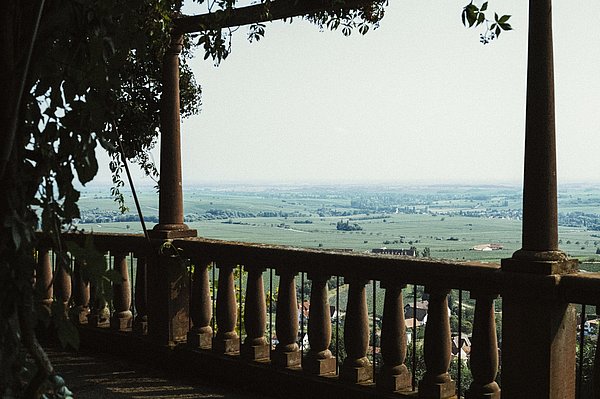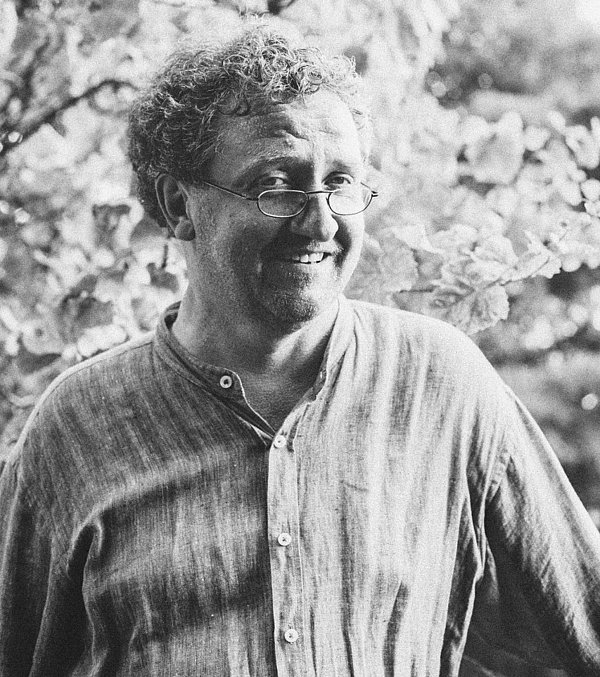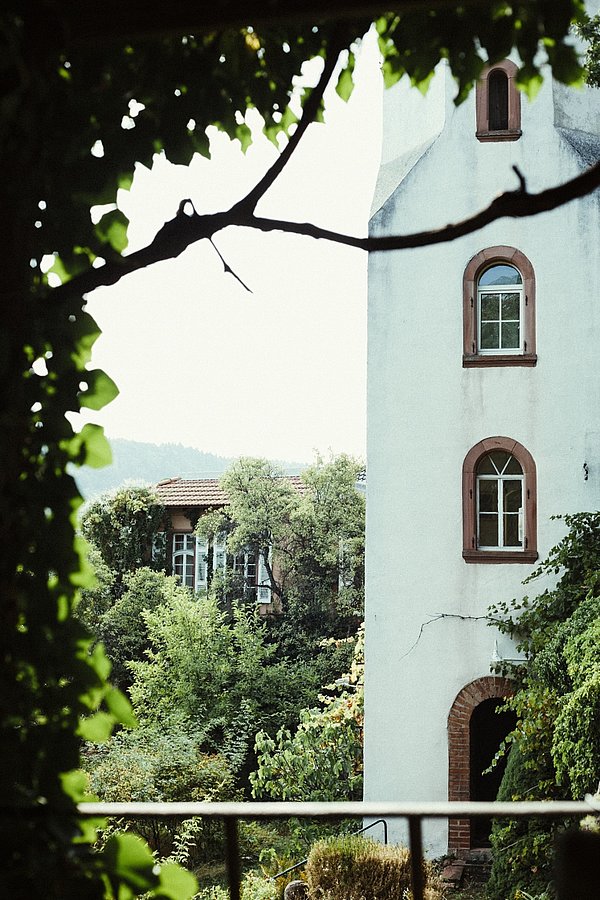

Text: Sigrid Frank-Esslinger
Leinsweiler is a small wine village on the edge of the Palatinate Forest. Above the village lie the ruins of the fortress of Neukastel – one of the imperial castles that protected Trifels in medieval times. The former farmyard of the castle is located halfway up a hill and framed by chestnut groves, vineyards and pastures. Destroyed during the Nine Years' War in 1689, the manor house was rebuilt on top of the old foundations and belonged to cigar factory owner Peter Finkler at the end of the 19th century. It was he who had the romantic, white, castellated tower erected in 1865.
The painter Max Slevogt, who was originally from Lower Bavaria, married Finkler's daughter Antonie – or "Nini" for short – in 1898. Slevogt, who became one of the most significant proponents of German Impressionism over the following years, lived in Berlin. However, he mostly spent the summer months in the Palatinate on his in-laws' farm. When they became unable to hold onto the estate, Slevogt took over in 1914 and paid for it by selling twenty pictures to the "Gemäldegalerie" in Dresden. In the Twenties, Slevogt extended the building to the south, where he created a library and a music room, both of which he adorned with his own murals.


The estate, which has since been known as the "Slevogthof", is today a real hotchpotch of sections that are badly in need of some refurbishment. The basic structure of the old, three-sided yard can still be clearly made out. The unmistakeable – if also entirely incongruous – white tower is still stable and the rooms painted by Slevogt himself are intact. The same applies for the enormous terrace with its sweeping view over the valley, the picturesque garden and the romantic stairway which Slevogt often painted. All of these features still exist and make the estate incomparable. Nevertheless, it's plain to see that the impressionists' heirs invested little in its upkeep over the decades. Extensions built in the Seventies transformed the manor into a rustic restaurant, whilst a fire caused one historic section to be replaced by a new building which still remains unplastered to this day. Since 2011, the Slevogthof has belonged to Landau-based architect and monument conservator Thorsten Holch, who intends to restore and rebuild it sensitively and with respect for its historic fabric.
Slevogt built the terrace in the Twenties and had a swimming pool installed in the garden. In the courtyard, where the manure heap used to stand, a new section of the building sprang up with a kitchen, dining room, the music room and the library. Slevogt never built a proper studio here. Although a printing press acquired for graphic prints used to stand here, he preferred to paint outdoors: in the terraced garden or on the staircase, on the bright forest paths or between the chestnut spinneys and the vineyards. Here, he found peace and relaxation and finally escaped from the darkness of studio painting. Inspired by the French Impressionists, Slevogt honed his new approach to sunlight and created many of his most famous pieces here. He spent winters in Berlin, where he became one of the most famous German Impressionists alongside Max Liebermann and Lovis Corinth and remained a popular book illustrator. During the summers, he relaxed at "the most remote farmstead in Germany" in Leinsweiler, which he would come to call his "private Tusculum" after the ancient residence of wealthy Romans in Italy. Amidst these romantic surroundings, Slevogt was able to relax and refuel, even take a break and – if reports are to be believed – lie on the sofa with the cat on his stomach and have conversations with it in "Cattish". In the music room with its imposing black grand piano, he indulged his passion for operas by Mozart and Wagner, played piano until the early hours and belted out operatic arias at the top of his voice.
This music room and the library – which he painted shortly before his death – are among Slevogt's few remaining murals. In the music room, these fittingly show motifs from his favourite operas, including Siegfried and Don Giovanni. In the library, which he completed in 1929, he depicted allegories of the four genres of poetry: among novels, he chose "The Leatherstocking Tales", "Arabian Nights" for the fairytale allegory, "Macbeth" for a drama and the duel between Achilles and Hector for the epic.
After his death in 1932, Max Slevogt was buried in the small family graveyard in the spinney adjacent to the house. The listed house and many of the painter's artworks accommodated within remained the property of the family for decades afterwards. Meanwhile, parts of Slevogt's library and the collection of artworks have come into the ownership of the state of Rhineland Palatinate. An exhibition in Villa Ludwigshöhe in Edenkoben exhibits a rotating selection of his paintings, prints and drawings. The new owner of the Slevogthof, Thorsten Holch, will carefully restore and renovate the various sections of the building over the coming years as appropriate for its listed status. He intends to open the house to the public again in a few years' time with gastronomy and guest rooms. The few surviving original rooms, including the library and the music room, will be preserved and protected by Holch. The intention is to open these rooms for tours.
Then guests and visitors alike will be able to stand on the large terrace and enjoy the sweeping views just as Slevogt himself did: over Leinsweiler below and across to where the mountains of the Palatinate Forest cascade down into the Rhine Valley. You can see the Palatinate as Slevogt himself immortalised it in his paintings: the vineyards, the bright forest paths and chestnut spinneys, red sandstone cliffs, fields, gardens, clear morning light and glowing sunsets, blooming trees in spring and the rust-red hues of the vine leaves in autumn. The Slevogthof and its white castellated tower lie in splendid isolation between pastures, vineyards and forests.

